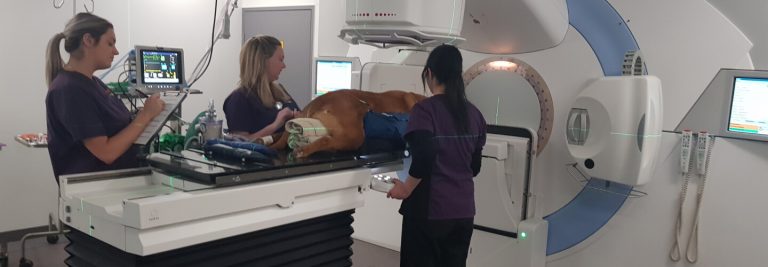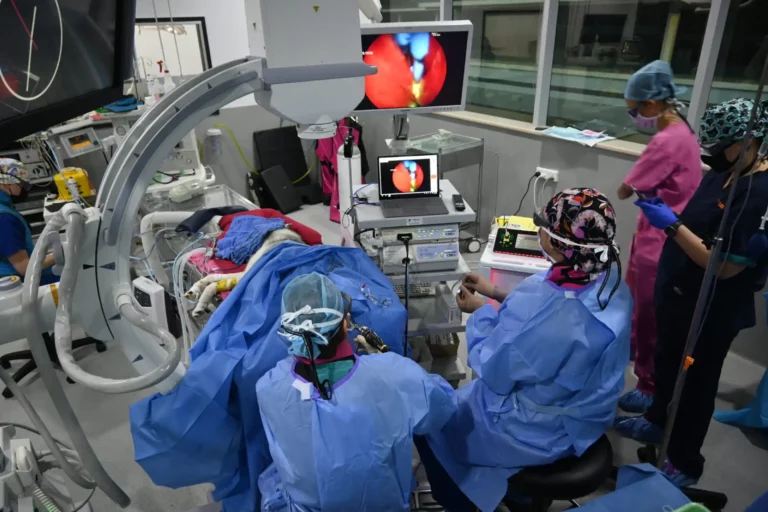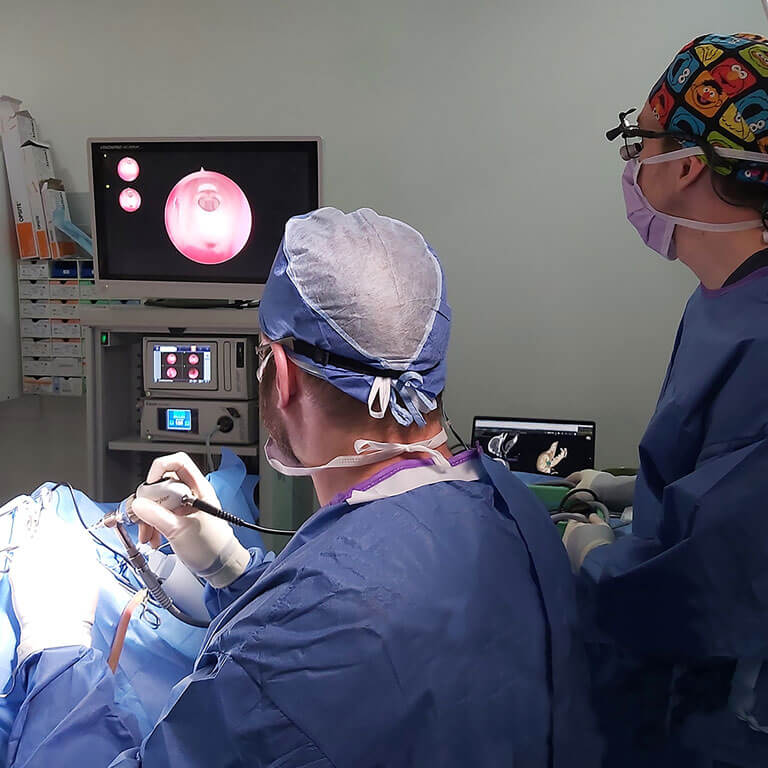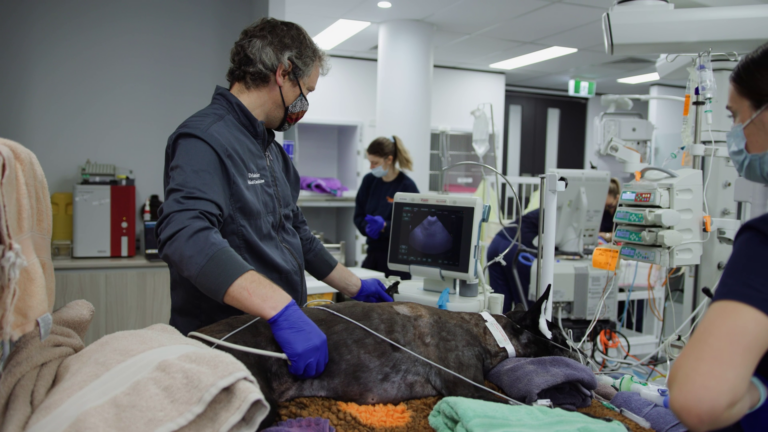Dr Hannah Darcy
What is IBD?
Inflammatory bowel disease refers to chronic idiopathic immunologic inflammation of the small intestine, characterised by infiltration of leucocytes into the mucosa of the intestinal tract. A number of different forms of IBD exist, classified by the location within the intestinal tract and predominant type of inflammation. A tighter definition, used in some studies, is that clinical signs only respond to immunomodulatory drugs, rather than the other management strategies at our disposal. IBD is part of the broad umbrella of ‘chronic enteropathies’, which are intestinal conditions with signs lasting for three weeks or more. The term IBD can easily be used inappropriately: for official diagnosis, we need to have histologically demonstrated mucosal inflammation, whilst ruling out any other causes.
What are the clinical signs of IBD?
The textbook picture of IBD is a patient with vomiting and diarrhoea, which can be small or large bowel in origin, depending on the area of the intestine affected. However, IBD can present in many different ways, along a spectrum of clinical signs, from a patient with variable appetite or intermittent borborygmi, to weight loss, and even effusions secondary to intestinal protein loss. As per the definition of IBD, these signs should have persisted for 3 weeks or more to be classed as a chronic enteropathy.
How is IBD diagnosed?
As we’ve already mentioned, official diagnosis of IBD requires biopsies of the intestines, to document inflammation. It also requires ruling out of other causes of intestinal inflammation, generally in the form of blood tests, faecal analysis and abdominal imaging. As a broad rule of thumb, approximately 1 in 10 dogs with chronic diarrhoea will have a systemic cause of their clinical signs. As well as using a general biochemistry panel to assess systemic health, we will screen for diseases such as hypoadrenocorticism, and pancreatitis or exocrine pancreatic insufficiency, dependent on clinical signs or signalment. Adjunctive tests such as folate and cobalamin measurement can help us to assess the severity of disease and also provide indications as to the likely location of inflammation within the intestinal tract. Abdominal imaging is an important part of assessing for possible systemic causes of gastrointestinal signs, as well as looking at the appearance of the intestinal walls. The final step in investigations is performing intestinal biopsies.
When should I biopsy and how should I do it?
The timing and method of intestinal biopsies is very much patient-specific. Whilst biopsies are required for official diagnosis of IBD, we tend not to rush to biopsies in a patient that is fairly stable in terms of weight and biochemical parameters, and particularly in patients that have not undergone diet trials and anthelmintic treatment. Once infectious disease and neoplasia have been ruled out, 66% of dogs with chronic diarrhoea will respond to dietary management – termed ‘food-responsive enteropathies’. An appropriate diet trial is one using a novel protein or hydrolysed diet as the SOLE food (no cheating!) for a minimum of two weeks, although maximum benefit may not be seen for 6-8 weeks. In some patients, diet trials may not be appropriate: in patients with dramatic weight loss and marked hypoproteinaemia, we are likely to consider performing biopsies at an earlier stage, as the severity of their disease may warrant earlier drug therapy. As medics, we advocate endoscopic biopsies where possible, to reduce patient morbidity, as well as giving us the leeway to start immunomodulatory treatment immediately if required. This is particularly important in patients with significant hypoproteinaemia, which is an important risk factor for dehiscence post-surgery. However, if intestinal pathology appears to be located in a region that cannot be reached endoscopically – such as the distal duodenum or jejunum – we may have to consider open biopsies.
How do I treat IBD?
IBD classically requires immunomodulatory therapy for management: in some patients this can be a short-term solution to reduce the burden of inflammation, whilst some patients require life-long drug therapy. Our go-to agent is usually prednisolone, although we may consider adjunctive or alternative immunosuppressants based on patient signalment, comorbidities and disease severity. It is also vital to consider other management strategies, as whilst drug therapy may be required to subdue the inflammation, it is important to maximise intestinal health long-term. We therefore advise changing to an appropriate exclusion diet (either novel protein or hydrolysed) and regular anthelmintic treatment. We are becoming increasingly aware of the importance of the microbiome in intestinal health, and probiotics may be of benefit in many patients – just watch out for hidden animal proteins! The use of antibiotics is a controversial topic, but may be considered in individual patients. For very tricky patients, we sometimes have to consider more weird and wonderful management strategies, such as faecal transplantation! The goal of the managing vet should be to reduce immunosuppressant doses to as low as possible to control clinical signs. Should a patient prove impossible to manage without high dose prednisolone, we need to reconsider adjunctive management strategies.
My number one tip would be to have a good chat with the client at the outset about the fact that IBD is a disease that we manage, not cure. The aim is to minimise clinical signs, and provide the patient with as good a quality of life as possible, but clients have to be prepared that there may well be flare-ups from time to time. IBD can be frustrating to manage, but with clear communication and a multimodal approach we can significantly improve quality of life for both our patients and their owners.
Pancreatitis
What is pancreatitis?
As per the name, pancreatitis refers to inflammation of the pancreas. Acute pancreatitis, presenting with classical signs of abdominal pain and gastrointestinal signs, is more commonly recognised, although we are becoming increasingly aware of the prevalence of chronic pancreatitis. Any patient can suffer from acute pancreatitis, however recognised risk factors include breed (Miniature Schnauzers and Yorkshire terriers in particular), drugs (such as potassium bromide and azathioprine), and conditions that may cause hypoxia or oxidative stress (such as anaemia, systemic inflammation, or general anaesthetic). In dogs, chronic pancreatitis is suspected to be an immune-mediated condition, and the poster child for this disease is the Cocker Spaniel. In cats, chronic pancreatitis is often seen in conjunction with chronic enteropathy and cholangiohepatopathy (so-called ‘triaditis’), and is probably often subclinical.
How is it diagnosed?
Unfortunately, no single perfect test is available. One of my lecturers at vet school insisted that pancreatitis could never fully be ruled out! Compatible clinical signs are generally key to a suspicion of acute pancreatitis, whilst chronic pancreatitis can be more difficult to detect. The three key factors in diagnosing pancreatitis are clinical signs/physical exam findings, imaging, and pancreatic lipase testing: a positive in two out of three of these provides decent grounding for diagnosing pancreatitis. The SNAP cPLI tests available in clinic are highly sensitive, (quoted up to 100% sensitivity) and a negative test therefore makes pancreatitis highly unlikely. On the flip side, specificity is only 72-78%, and therefore does not definitively diagnose pancreatitis. The expense of a quantitative specific cPLI or fPLI may be worth-while in a patient that is proving otherwise difficult to diagnose, or to track changes in a case of chronic pancreatitis. Findings suggestive of acute pancreatitis on ultrasound include an enlarged, hypoechoic pancreas, with hyperechoic surrounding fat. Chronic pancreatitis may appear as a heterogenous pancreas with an irregular outline.
How is it treated?
I wish there was a specific treatment for chronic pancreatitis, but as we all sadly know, supportive care is the best we can offer! In acute pancreatitis, the most important management strategies are maintaining perfusion of the pancreas and correcting dehydration via appropriate fluid therapy, providing analgesia, and addressing GI disturbance. This includes anti-emetics and prokinetics if required: ileus is frequently seen secondary to inflammation of the adjacent small intestine, and can significantly impact on patient comfort and appetite. One of the most important factors in managing pancreatitis is providing early enteral nutrition. In mild-moderate cases, anti-emetics and appetite stimulants may be sufficient, whilst feeding tubes should be considered if patients show no interest in food within 24-48 hours. Whilst it may go against our traditional learnings, there is a growing body of evidence for the use of prednisolone, both in acute and chronic pancreatitis, so watch this space! Once patients have recovered, some dogs may benefit from a low-fat diet, whilst cats are more likely to respond to a hypoallergenic diet to manage concurrent intestinal disease.
When should I refer?
Many cases of pancreatitis can be well-managed in first opinion practice. However, it is important not to underestimate this condition, as pancreatic inflammation can rapidly escalate to affect the rest of the body, resulting in multiple organ dysfunction at the most extreme end of the spectrum. Referral for intensive management should be considered in patients with evidence of disturbance of other organs (such as increased liver enzymes, azotaemia, cardiovascular disturbance), or in patients proving refractory to initial supportive care. Additionally, patients suffering from recurrent bouts of pancreatitis may benefit from referral for investigation into underlying triggers.
For more information, get in touch with the team at SASH.




